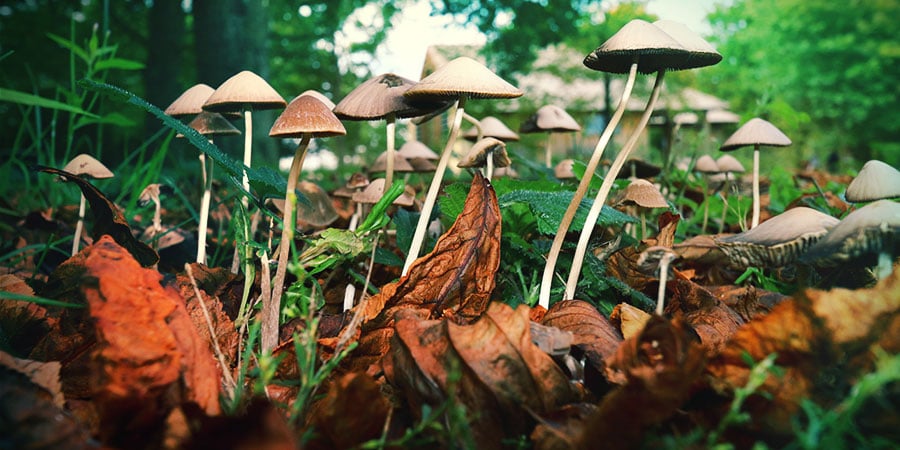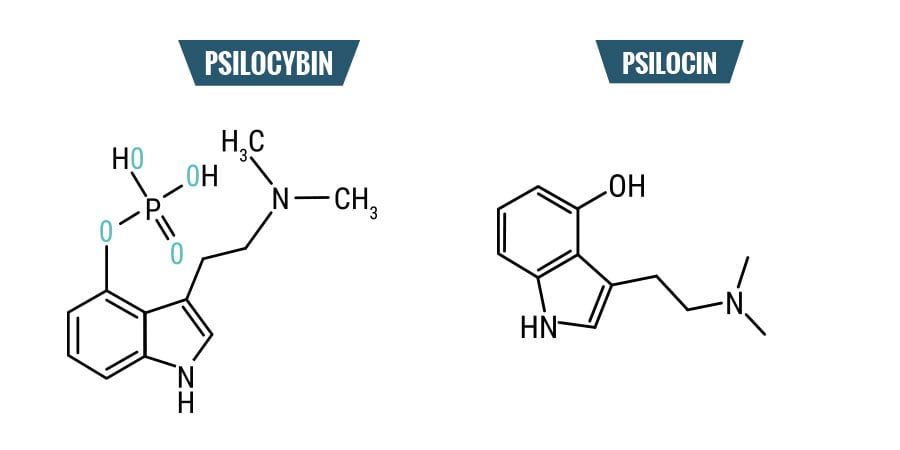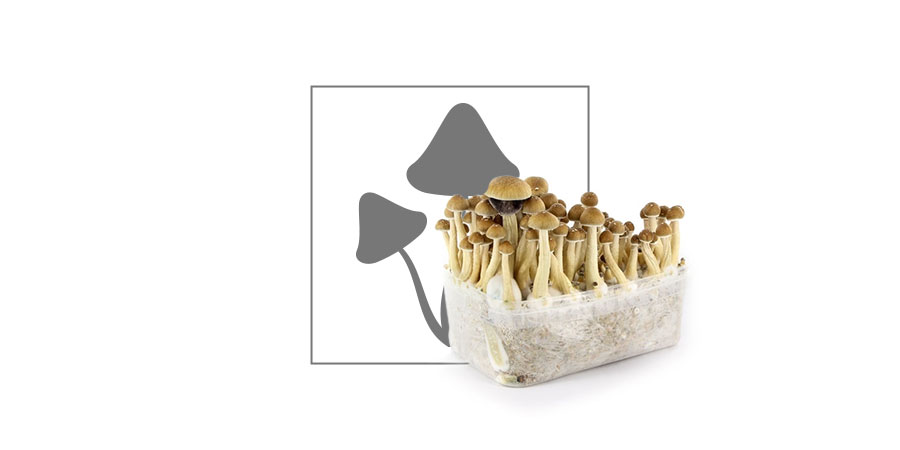
Psilocybin vs Psilocin: what’s the difference?
Magic mushrooms contain both psilocin and psilocybin. But what's the difference between these two compounds, and how do they each affect humans? Read along as we offer a primer on the two main psychedelic alkaloids in shrooms.
Understanding magic mushrooms can be a tricky business. Unless you are well versed in chemistry, coming to grips with the interactions of the psychoactive compounds it contains can be a daunting task, and even then, there is still much to learn. To help spread a bit of knowledge, we are going to take a look at the difference between psilocybin and psilocin, the two main compounds responsible for a magic mushrooms trip.
THE MAIN DIFFERENCE BETWEEN THE TWO

So what is the difference? Well, it mainly comes down to the way the body interacts with both compounds. Both psilocybin ((O-phosphoryl-4-hydroxy-N) and psilocin (4-hydroxy-N,N-dimethyl-tryptamine) are equally psychoactive, but it is actually psilocin that is largely responsible for the high mushrooms cause. This is because the main method of taking mushrooms is oral ingestion, and any psilocybin that is ingested is broken down to psilocin in the digestive track by the enzyme alkaline phosphate. We know that psilocybin is just as psychoactive, as scientific research often uses other methods of dosing that bypass the digestive tract, maintaining the structure of psilocybin within the body but still having the same effect.

Both psilocybin and psilocin occur naturally within magic mushrooms, but outside of the body, psilocin is very unstable, and is quickly degraded when exposed to heat or oxygen. This is why fresh magic mushrooms bruise so easily when they are picked - it is the psilocin held within reacting and degrading.
Don’t worry though! Bruised mushrooms are still plenty potent, as the psilocybin they contain is much more stable. Plus, the natural levels of psilocybin within magic mushrooms are much higher than psilocin, with only a trace amounts of the latter being present. What this means is that potential potency loss from degraded psilocin is negligible. It is for this reason that lab research uses psilocybin rather than psilocin, as the stability of psilocybin offers much more versatility while still reacting the same way with the body and mind.
Eventually, the body breaks down the psychoactive substances using mono-amino oxidase enzymes, where they are then safely excreted from the body.
So as you can see, the main difference comes down to a question of stability, and how the body processes each compound. The trip is still the same, no matter which is taken. So kick back and enjoy the colours!
-
 4 min
22 April 2021
How To Make Lemon Tek For A Faster Mushroom/Truffle Trip
Sometimes, you just want to come up hard and fast. Luckily, there's a way. If you're after mind-bending trips in under twenty minutes, you've come to the right place. Just make sure you're prepared...
4 min
22 April 2021
How To Make Lemon Tek For A Faster Mushroom/Truffle Trip
Sometimes, you just want to come up hard and fast. Luckily, there's a way. If you're after mind-bending trips in under twenty minutes, you've come to the right place. Just make sure you're prepared...
-
 4 min
18 September 2020
Magic Truffles vs Magic Mushrooms: Who will win?
Magic truffles and shrooms are different yet similar. Both can serve the same purpose, but there are differences between the two that mean one may suit you more than the other. Find out more below.
4 min
18 September 2020
Magic Truffles vs Magic Mushrooms: Who will win?
Magic truffles and shrooms are different yet similar. Both can serve the same purpose, but there are differences between the two that mean one may suit you more than the other. Find out more below.
-
 4 min
5 February 2018
The Most Famous Psilocybin Mushrooms
Magic mushrooms are mostly known for inducing psychedelic experiences, but did you know that there are actually benefits to ingesting psilocybin, the most abundant psychoactive substance in...
4 min
5 February 2018
The Most Famous Psilocybin Mushrooms
Magic mushrooms are mostly known for inducing psychedelic experiences, but did you know that there are actually benefits to ingesting psilocybin, the most abundant psychoactive substance in...
-
 3 min
7 January 2018
Cultivate The Extraordinary: Top 5 Magic Mushroom Grow Kits
Wherever you are in your psychedelic journey, Zamnesia has a magic mushroom grow kit to suit your needs and desires. Looking to pick out a grow kit but not sure which one to select? Here we list...
3 min
7 January 2018
Cultivate The Extraordinary: Top 5 Magic Mushroom Grow Kits
Wherever you are in your psychedelic journey, Zamnesia has a magic mushroom grow kit to suit your needs and desires. Looking to pick out a grow kit but not sure which one to select? Here we list...









 United States
United States














